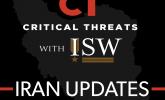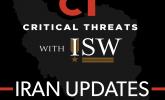Russian Offensive Campaign Assessment, May 1, 2023
May 1, 2023 - ISW Press
Russian forces conducted another large-scale missile strike against Ukraine on the night of April 30 to May 1. Ukrainian sources reported that nine Tu-95 and two Tu-160 strategic bombers took off from Murmansk Oblast and near the Caspian Sea and launched 18 Kh-101/555 cruise missiles at Ukraine. Ukrainian air defense shot down 15 of the missiles. Geolocated footage from Pavlohrad, Dnipropetrovsk Oblast, shows that one of the missiles struck the Pavlohrad Chemical Plant and caused a massive explosion on impact. The Russian Ministry of Defense (MoD) claimed on May 1 that the strikes targeted Ukrainian military-industrial objects and successfully disrupted the production of military resources. The Russian MoD has recently shifted its rhetoric and is actively describing strike campaigns, likely in an effort to portray a proactive approach to growing concerns in the Russian information space regarding a Ukrainian counteroffensive. Russian milbloggers claimed that the missiles struck Ukrainian air defense systems and a transportation hub in Pavlohrad. Ukrainian Air Force Spokesperson Yuriy Ihnat noted that the fact that both the Tu-95 and Tu-160s carried far fewer missiles than their maximum load suggests that Russia continues to struggle with adequate production of such munitions.










